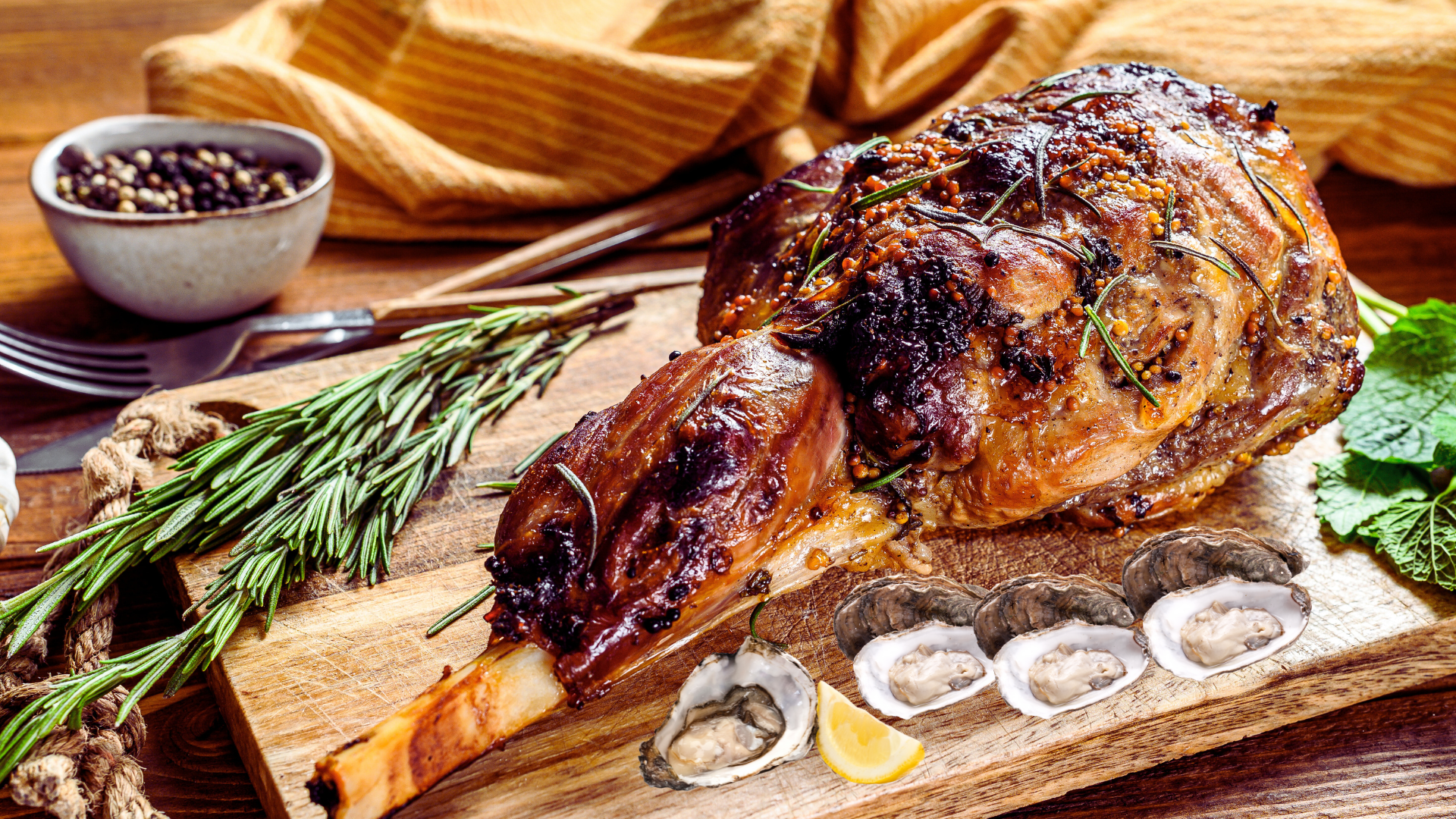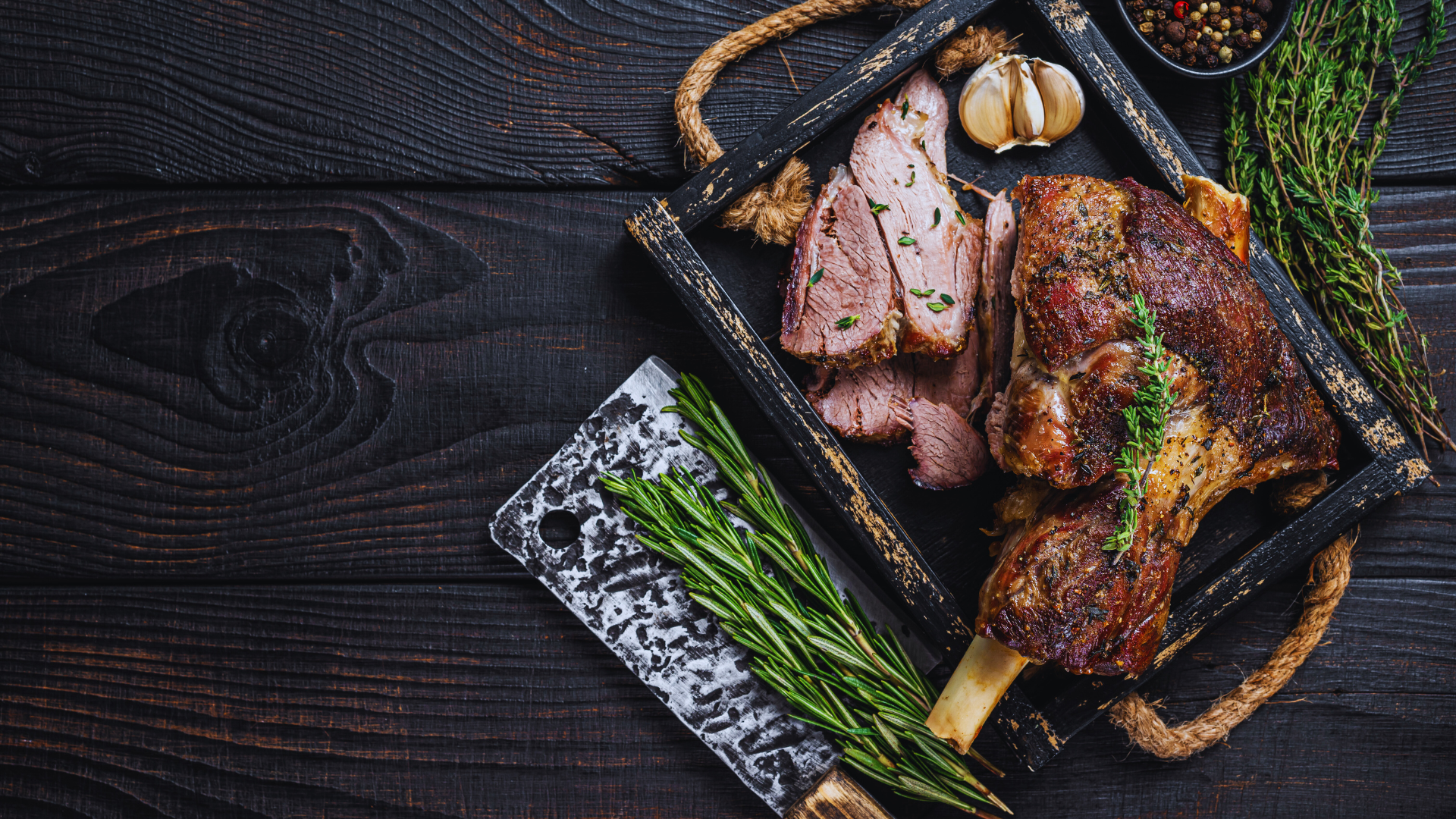
Cooking Mutton the French Way
Mutton, known as mouton in French, holds an important, though somewhat less prominent, place in French cuisine compared to other meats like beef, pork, or lamb. Traditionally, mutton—meat from mature sheep—was considered a hearty and rustic choice, often favored in rural and pastoral regions of France where sheep farming has been prevalent for centuries. Mutton's richer, more pronounced flavor compared to lamb makes it ideal for slow-cooking techniques and pairing with robust sauces. While lamb (agneau) tends to dominate modern French culinary practices, mutton has long been appreciated for its distinctive taste, particularly in regional and traditional dishes.

Mutton vs. Lamb in French Cuisine
Lamb: In contemporary French cuisine, lamb (especially spring lamb) is far more common in gourmet restaurants and home cooking due to its tenderness and milder flavor. Lamb dishes are often featured during special occasions, such as Easter.
Mutton: Though less prevalent today, mutton has retained its place in rustic and regional dishes. Its stronger flavor is particularly valued in stews, slow-cooked dishes, and roasts where the meat can be tenderized and its deep flavors enhanced.
Mutton in French Culinary Traditions
The cooking of mutton in France is intertwined with the country’s agricultural traditions and its appreciation for terroir—the idea that local environment and farming practices impart unique flavors to food. Mutton, like lamb, is closely tied to the regions where sheep farming is a key part of the economy. The flavor of mutton reflects not only the age of the animal but also the environment it was raised in, from the salt marshes of Normandy to the mountain pastures of the Pyrenees.
Mutton dishes are often associated with festive meals and family gatherings, particularly in rural France, where the slower pace of life and traditional ways of cooking remain strong. The slow-cooking methods used to prepare mutton—whether in a daube, a ragout, or roasted with herbs—make it ideal for long, leisurely meals, often shared among family and friends.

Gigot de Mouton (Leg of Mutton)
A classic preparation for a leg of mutton, Gigot de Mouton involves roasting the meat on the bone, often studded with garlic and herbs such as thyme and rosemary. The leg is typically served with a gravy made from the meat’s own juices, or sometimes a red wine reduction. This dish is often served during family gatherings or on holidays, especially in regions with sheep-rearing traditions like Provence or the Pyrenees.

-
Gigot de Mouton (Leg of Mutton) is a classic French dish often served during special occasions. Mutton, which comes from older sheep, has a rich, deep flavor that pairs wonderfully with herbs and garlic. Here's a traditional recipe for Gigot de Mouton:
Ingredients:
1 leg of mutton (about 4-5 lbs)
6 garlic cloves, peeled and sliced into slivers
2 tablespoons fresh rosemary, finely chopped
2 tablespoons fresh thyme, finely chopped
1/4 cup olive oil
Salt and freshly ground black pepper
1/2 cup dry white wine or chicken stock (for deglazing)
For roasting vegetables (optional):
4-5 large potatoes, peeled and quartered
4 large carrots, peeled and cut into chunks
2 large onions, peeled and quartered
3 tablespoons olive oil
Salt and pepper
Instructions:
1. Preheat the Oven:
Preheat your oven to 375°F (190°C).
2. Prepare the Mutton:
Make small incisions (about 1 inch deep) all over the leg of mutton with a sharp knife.
Insert slivers of garlic into each incision to infuse flavor.
Rub the leg with olive oil, then generously season with salt, black pepper, chopped rosemary, and thyme.
3. Roast the Leg of Mutton:
Place the leg of mutton on a roasting rack in a large roasting pan. This allows the heat to circulate around the meat for even cooking.
Roast for about 20 minutes per pound for medium-rare doneness (about 1 hour and 30 minutes to 1 hour and 45 minutes for a 4-5 lb leg). Use a meat thermometer to ensure it's cooked to your liking—135°F (57°C) for medium-rare, or up to 145°F (63°C) for medium.
Halfway through roasting, add the wine or chicken stock to the pan to deglaze and create a flavorful base for a gravy (optional).
4. Prepare the Vegetables (Optional):
Toss the potatoes, carrots, and onions with olive oil, salt, and pepper. Spread them around the mutton in the roasting pan about 40-50 minutes before the mutton is done, allowing them to cook in the mutton's juices.
5. Rest the Mutton:
Once the leg of mutton reaches your desired internal temperature, remove it from the oven and let it rest, loosely covered with foil, for 15-20 minutes. This helps retain the juices and makes carving easier.
6. Make the Gravy (Optional):
After removing the mutton, you can use the pan drippings to create a gravy. Place the roasting pan over medium heat on the stovetop, add a bit of flour, and whisk to form a roux. Slowly whisk in more stock or wine until the gravy reaches your desired consistency.
7. Serve:
Carve the leg of mutton into slices and serve with the roasted vegetables. Pour the pan juices or gravy over the meat.
Tips:
If you want extra flavor, you can marinate the leg of mutton overnight with garlic, herbs, olive oil, and a splash of wine.
For a more rustic touch, serve with French-style mustard or a side of ratatouille.
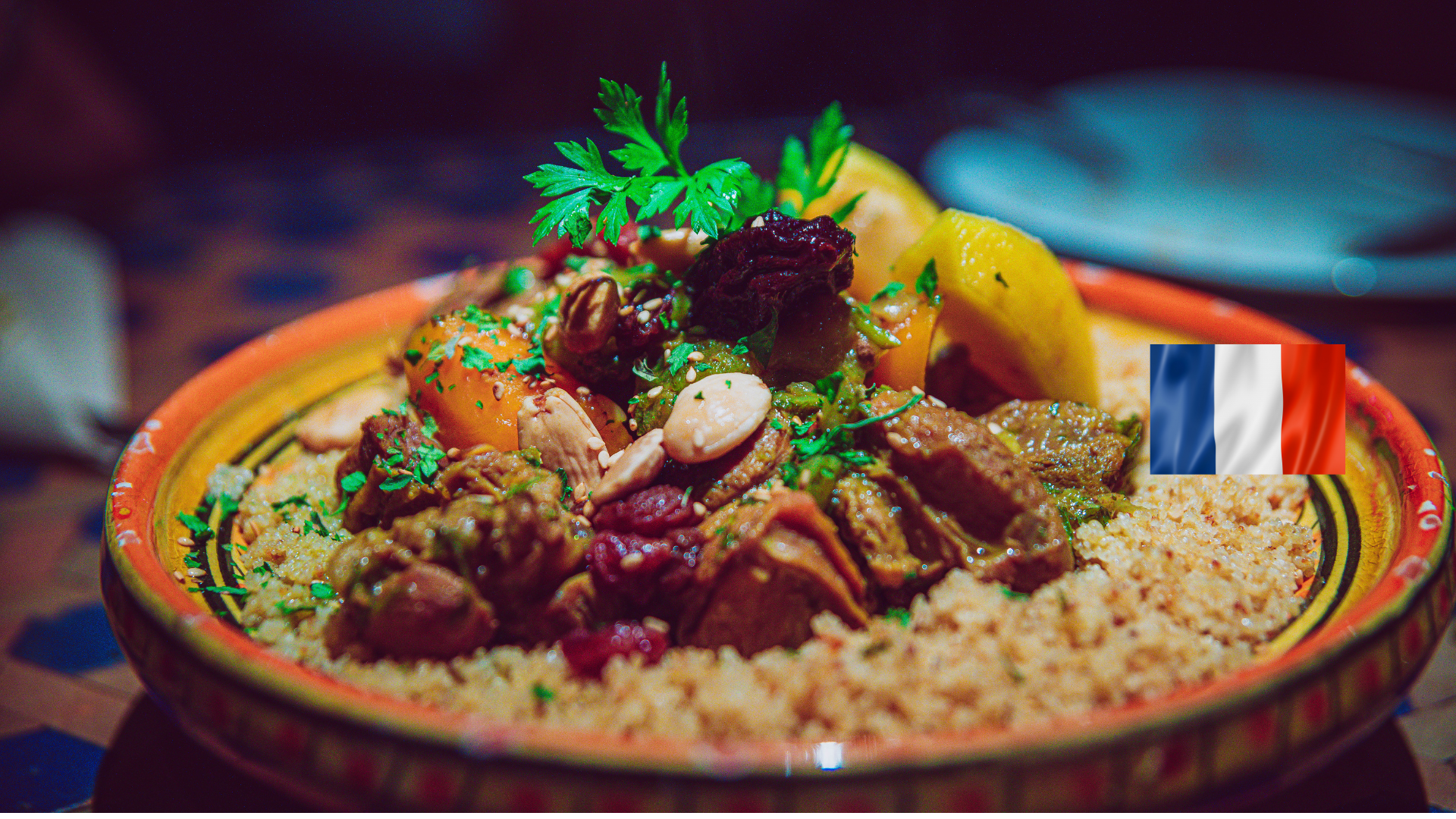
Mutton in Couscous
In France, North African cuisine has a strong influence, especially in cities like Marseille and Paris, where there are large populations from former French colonies. Mutton is often used in couscous, a traditional Maghreb dish featuring semolina grains, slow-cooked vegetables, and spiced meat. The mutton, with its rich, gamey flavor, adds depth to the dish and is commonly accompanied by a broth flavored with harissa, a spicy chili paste.

Ragoût de Mouton
Ragoût is a French stew, and Ragoût de Mouton was a common dish in rural France. The mutton is browned and simmered with vegetables, garlic, herbs, and broth. Sometimes, wine or tomatoes are added to enrich the flavor. It is a hearty dish that highlights the natural flavors of the mutton and is typically served with bread or potatoes to soak up the sauce.

Mouton en Daube (Mutton Daube)
Daube refers to a traditional French method of slow-cooking meat in wine with vegetables and herbs. Mouton en Daube was a popular dish in the south of France, particularly in Provence. The mutton is marinated in red wine, garlic, and spices, and then slow-cooked until tender. This dish exemplifies the rustic character of mutton and pairs well with the robust flavors of Provençal cuisine.

Navarin d’Agneau (Navarin of Lamb or Mutton)
While often made with lamb today, this dish was traditionally made with mutton. Navarin is a type of stew that combines pieces of mutton or lamb with root vegetables like carrots, turnips, and potatoes. It’s cooked in a rich sauce made from broth and tomatoes, and is slow-cooked to allow the flavors to meld. The name "navarin" is thought to be derived from navet (turnip in French), one of the key vegetables in the dish.

Pot-au-feu de Mouton
Pot-au-feu is one of France's most traditional dishes, a comforting broth made with meat and vegetables. While it is typically made with beef today, it was historically prepared with mutton in many regions. The meat is simmered for hours with vegetables like carrots, leeks, and potatoes. The broth is served first as a soup, followed by the meat and vegetables as a main course.
Pot-au-Feu is one of the most traditional and beloved dishes of French cuisine, known as the quintessential French comfort food. It translates to "pot on fire", reflecting the dish's simplicity and rustic origins.

Mouton à la Montmorency
A historic recipe from the Montmorency region, this dish involves cooking mutton in a flavorful broth made with wine, onions, carrots, and a bouquet garni (a bundle of herbs). It’s often finished with cherries or a cherry sauce, a nod to the region's cherry orchards.
Mouton à la Montmorency is a classic French dish, featuring lamb chops served with a rich cherry sauce. The "Montmorency" in the name refers to the famous Montmorency cherries, known for their tartness, which complement the lamb beautifully.

-
Mouton à la Montmorency is a classic French dish, featuring lamb chops served with a rich cherry sauce. The "Montmorency" in the name refers to the famous Montmorency cherries, known for their tartness, which complement the lamb beautifully. Here's a recipe for you to try:
Ingredients:
For the Lamb:
6 lamb chops (about 1 inch thick)
2 tablespoons olive oil
1 tablespoon butter
2 garlic cloves, minced
Salt and freshly ground black pepper
1 teaspoon fresh thyme leaves (or ½ teaspoon dried thyme)
For the Montmorency Sauce:
1 cup fresh or frozen Montmorency cherries (pitted)
1/2 cup red wine (preferably a robust one, like a Cabernet or Pinot Noir)
1/4 cup balsamic vinegar
1/4 cup cherry preserves (or a tart jam, if Montmorency cherries aren't available)
1 tablespoon honey (optional, to balance tartness)
1 small shallot, finely chopped
1 tablespoon butter
1 sprig fresh rosemary
Salt and pepper to taste
Instructions:
1. Prepare the Lamb Chops:
Season the lamb chops generously with salt, pepper, and thyme on both sides.
In a large skillet, heat the olive oil and butter over medium-high heat. When the butter begins to foam, add the minced garlic and lamb chops.
Sear the chops for about 3-4 minutes per side until they are golden brown and cooked to your preferred doneness (medium-rare is ideal, but cook longer if you prefer). Once done, remove from the pan, cover loosely with foil, and let rest.
2. Prepare the Montmorency Sauce:
In the same pan, add the chopped shallot and sauté until softened (about 2-3 minutes).
Add the red wine to deglaze the pan, scraping up the browned bits for flavor.
Stir in the balsamic vinegar, cherry preserves, and fresh Montmorency cherries. Add the rosemary sprig for extra fragrance.
Simmer the sauce for 8-10 minutes, allowing it to reduce and thicken. Taste the sauce and add honey if it’s too tart for your liking.
Remove the rosemary sprig and stir in the tablespoon of butter for extra richness. Season the sauce with salt and pepper to taste.
3. Serve:
Place the lamb chops on individual plates, spooning the Montmorency cherry sauce over the top.
Pair with sides like roasted vegetables or mashed potatoes.
Tips:
If Montmorency cherries are hard to find, you can substitute with another tart cherry variety, or even dried Montmorency cherries (rehydrated in warm water or wine).
This dish pairs beautifully with a red wine like a Pinot Noir or a Bordeaux blend.

Cutlets à la Mainteno
Classical
Cut a neck of mutton into chops, ensuring each chop has a bone with the end scraped clean. In a bowl, combine grated bread, finely chopped marjoram, and onion. Season the mixture with pepper, salt, and a pinch of nutmeg. After melting some butter, dip each chop into the butter, then coat both sides with the seasoned mixture.
Next, butter some half-sheets of white paper and wrap each cutlet, leaving the bone exposed like a handle. Place the wrapped cutlets on a gridiron and broil them over lively coals for about twenty minutes.
For the sauce, finely chop four shallots or small onions and add them to some gravy. Season with a bit of pepper and salt, and stir in a spoonful of red wine. Bring the sauce to a quick boil, then serve it in a sauce boat alongside the cutlets, still wrapped in their paper.
"Cutlets à la Maintenon" is a classic French dish, historically associated with Madame de Maintenon, the second wife of King Louis XIV of France. The dish typically involves veal or lamb cutlets that are prepared in an elaborate manner, often involving cooking them with a rich sauce and sometimes en papillote (wrapped in parchment paper) to preserve their moisture and enhance their flavor.

-
Here’s a general overview of how Cutlets à la Maintenon are prepared:
Ingredients:
Veal or lamb cutlets (or chicken in some variations)
Butter
Shallots
Mushrooms
Breadcrumbs
Parsley
Salt and pepper
Madera wine (optional)
Parchment paper for wrapping
Preparation Steps:
Sautéing the Filling: Finely chop shallots and mushrooms. Sauté them in butter until softened and lightly browned. Add seasoning and parsley. Optionally, a splash of Madera wine or similar can be added for extra flavor.
Preparing the Cutlets: Season the cutlets with salt and pepper. They can either be lightly browned in a pan with butter or placed raw directly onto the parchment paper, depending on the recipe.
Assembly: Place the sautéed mushroom and shallot mixture on top of each cutlet. Optionally, sprinkle with breadcrumbs for texture.
En Papillote (Optional): Wrap each cutlet in parchment paper, sealing them tightly to lock in the juices.
Baking: Place the wrapped cutlets in a preheated oven and bake until fully cooked and tender.
Serving: Serve the cutlets still wrapped, allowing each person to unwrap their cutlet at the table to release the steam and aroma.
This dish is luxurious and can be paired with elegant sides such as roasted vegetables or a light salad.
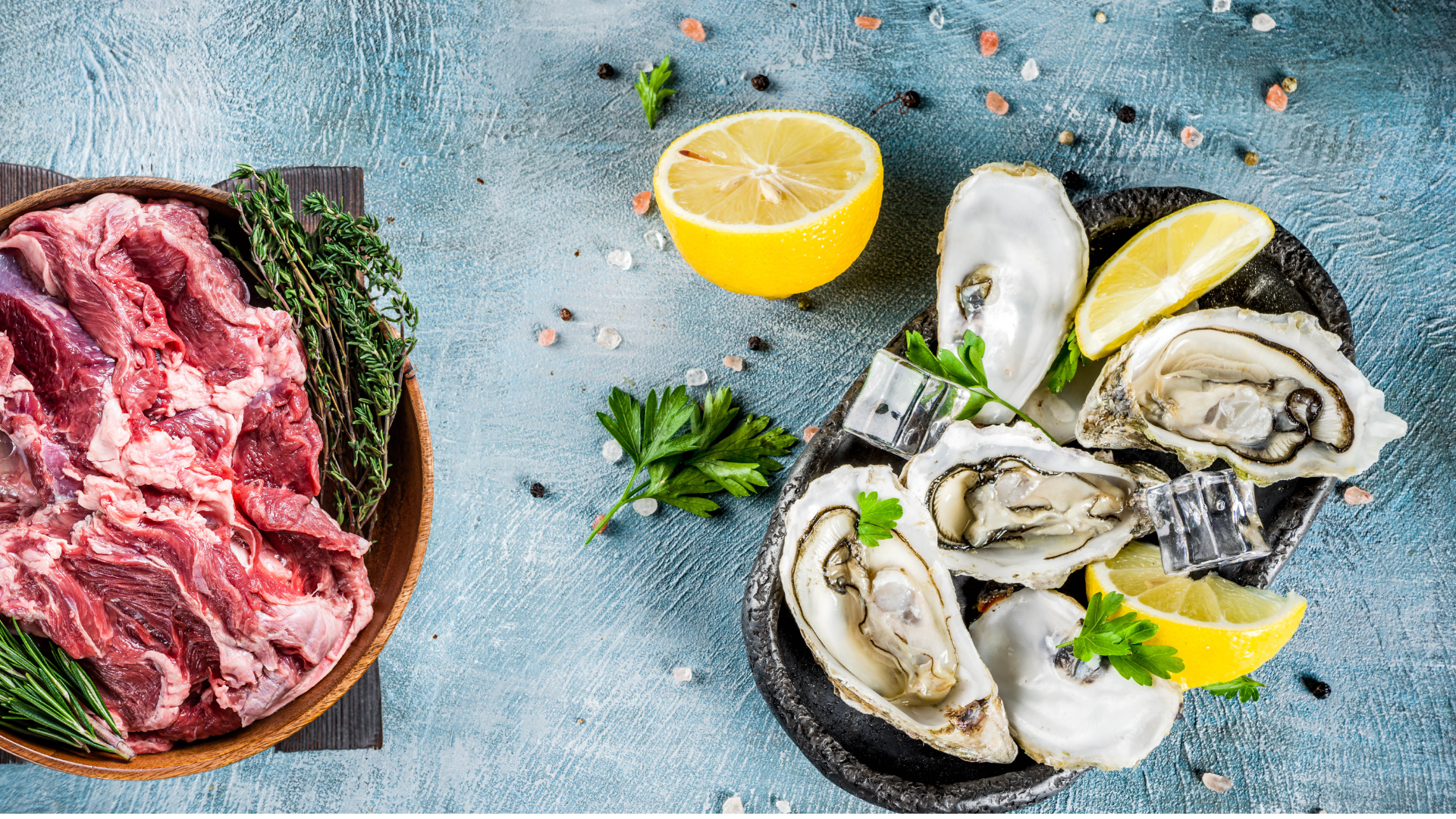
Leg of Mutton With Oysters
Classical
Rub a leg of mutton thoroughly with salt, then place it on the spit to roast over a clear fire, regularly basting with its own juices. When it’s nearly cooked, remove it from the heat and use a sharp knife to make small cuts all over. Insert an oyster into each incision, then return the mutton to the fire to finish roasting.
Before serving, skim the gravy to remove excess fat, then bring it to a boil along with a glass of red wine for added flavor.
Leg of Mutton with Oysters (in French, Gigot d'Agneau aux Huîtres) is a dish that combines the rich, earthy flavors of roasted mutton or lamb with the briny, delicate taste of oysters. While the combination might seem unusual today, mutton and oysters were popular ingredients in French and European cuisine, especially in the 18th and 19th centuries, when seafood was often paired with meat in elaborate dishes served at banquets and royal tables.
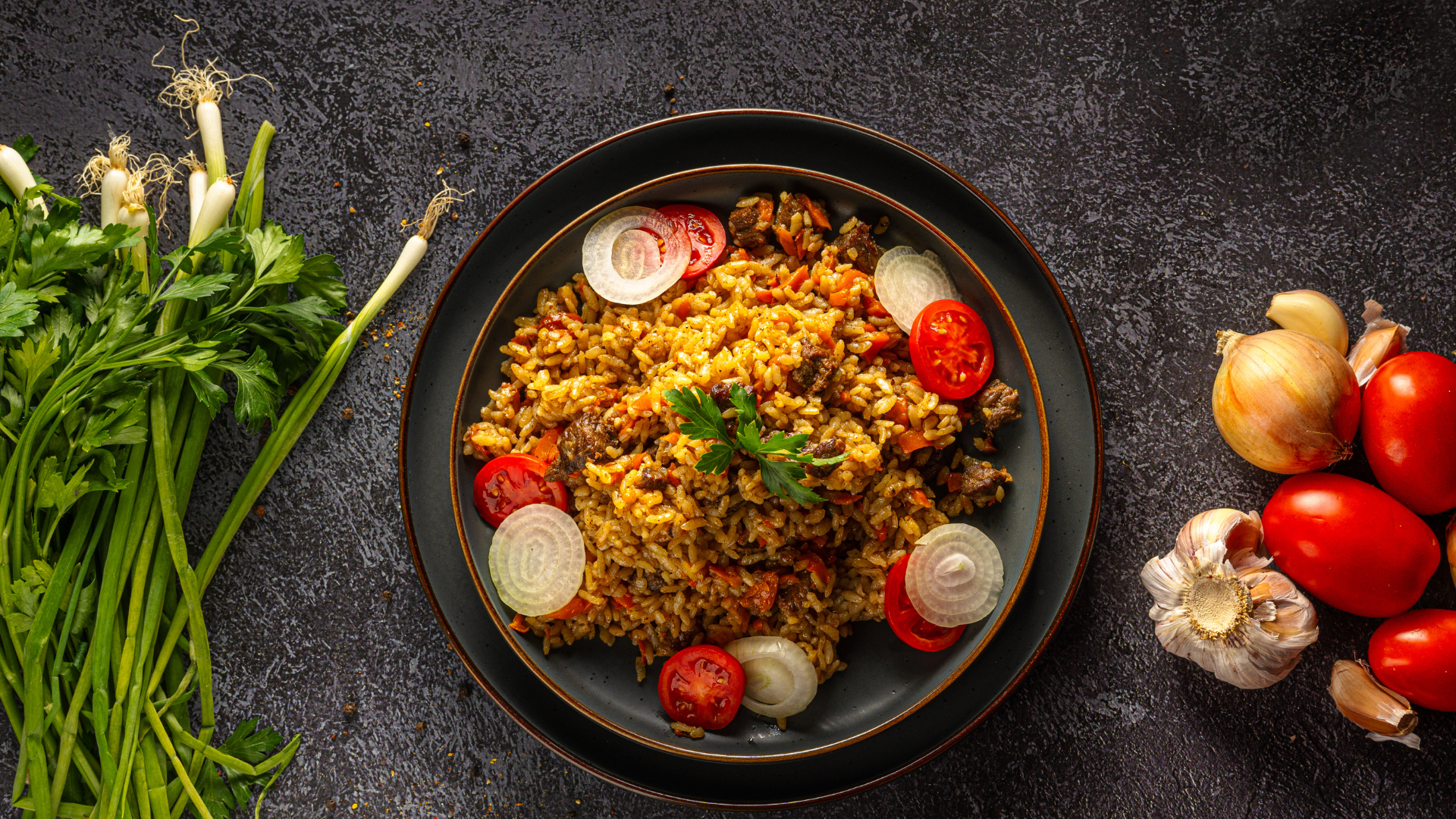
Pilau (mutton or veal)
Classical
Take six slices of lean leg of mutton or veal fillet and place them in a stewpan along with six large onions, a chopped carrot, and some parsley. Season with salt, pepper, and a dash of nutmeg. Add a teaspoon of saffron, a piece of butter rolled in flour, and a little boiling water. Let it stew gently for an hour, skimming off any impurities as needed.
Meanwhile, cook a pound of rice until soft, then drain it and mix in a generous amount of butter. In a deep dish, spread a layer of rice on the bottom. Arrange the cooked meat slices on top, adding the vegetables and seasoning from the stew. Pile the remaining rice over the meat, and place the dish on the stove or in the oven for about ten minutes before serving.
French Mutton or Veal Pilau is a dish that blends influences from French cuisine and the traditional pilaf method of cooking rice in seasoned broth. The meat (mutton or veal) is stewed until tender, then mixed with rice and spices, creating a savory, aromatic one-pot dish. Here’s a recipe that draws from French techniques but has a subtle Middle Eastern influence.

-
Ingredients:
700g mutton or veal (boneless, cut into chunks)
1 ½ cups long-grain rice (basmati works well)
2 tablespoons olive oil or butter
1 large onion, finely chopped
3 garlic cloves, minced
1 medium carrot, diced
2 celery stalks, diced
1 bay leaf
2 teaspoons ground cumin
1 teaspoon ground coriander
1 cinnamon stick (optional)
½ teaspoon ground turmeric
1 ½ cups chicken or beef stock (or water)
1 cup white wine (optional, or use more stock)
Salt and pepper to taste
Fresh parsley or cilantro, chopped (for garnish)
Lemon wedges (for serving)
Instructions:
Prepare the Meat:
Season the mutton or veal chunks with salt and pepper.
In a large pot or Dutch oven, heat the olive oil or butter over medium-high heat. Sear the meat in batches until browned on all sides (about 4-5 minutes per batch). Remove the meat and set aside.
Sauté the Vegetables:
In the same pot, add the chopped onion, garlic, carrot, and celery. Cook over medium heat until the vegetables are softened and golden, about 7-8 minutes.
Add Spices:
Stir in the ground cumin, coriander, and turmeric. If using, add the cinnamon stick. Cook for another minute to toast the spices and release their flavors.
Deglaze the Pan:
Pour in the white wine (if using) and scrape the bottom of the pot to release any browned bits. Let the wine reduce for a few minutes.
Cook the Meat:
Return the browned mutton or veal to the pot. Add the bay leaf and enough stock to cover the meat. Bring to a simmer, then reduce the heat to low.
Cover and cook for 1 to 1 ½ hours, or until the meat is tender and can easily be pierced with a fork.
Prepare the Rice:
While the meat is cooking, rinse the rice under cold water until the water runs clear to remove excess starch.
Once the meat is tender, add the rice to the pot, stirring gently to mix it with the meat and vegetables.
Cook the Pilau:
Add the remaining stock (or water) to the pot, ensuring there’s enough liquid for the rice to absorb. You can add more stock if needed to keep the rice moist as it cooks.
Cover the pot and simmer for another 20-25 minutes, or until the rice is fully cooked and has absorbed the broth. Check occasionally to make sure the rice doesn’t dry out.
Rest and Serve:
Once the rice is done, remove the pot from heat and let it rest for about 10 minutes before fluffing the rice with a fork.
Garnish with freshly chopped parsley or cilantro and serve with lemon wedges for a bright finish.
Suggested Accompaniments:
Yogurt or raita (a cucumber-yogurt sauce) pairs nicely with this dish.
A simple green salad with a vinaigrette.
Roasted or grilled vegetables, such as eggplant or zucchini.
This French-inspired mutton or veal pilau is hearty, full of flavor, and perfect for a comforting family meal.

Mutton in French Culture
Historically, mutton was more commonly consumed than lamb because sheep were raised for their wool and milk, and only slaughtered when they were older. The strong flavor of mutton reflects the animal’s age and was prized in more rustic and peasant-style cooking, particularly in rural areas where sheep farming was common, such as the Pyrenees, Normandy, and Provence.
Though lamb has become more fashionable in contemporary French cuisine due to its milder taste and tenderness, mutton remains a symbol of tradition and can still be found in certain regions and dishes. Mutton's robust flavor pairs well with garlic, rosemary, thyme, and other aromatic herbs, which are prevalent in French cooking.
The slow-cooking techniques used in traditional French mutton dishes are intended to break down the tougher fibers of the meat, resulting in rich, tender meals that embody the essence of French rustic cuisine.
Modern French Cuisine and Mutton
In modern French cuisine, mutton has become less common, with lamb generally being the preferred choice due to its tenderness and more delicate flavor. However, in recent years, there has been a renewed interest in heritage cooking and the use of less common cuts of meat, including mutton. Chefs in France are increasingly returning to the roots of French gastronomy, celebrating regional and traditional dishes that feature mutton, especially in the context of farm-to-table dining and sustainable meat consumption.






